13-12 MAY 1638-1648 RED FORT BUILT
Red Fort
From Wikipedia, the free encyclopedia
| Red Fort लाल क़िला | |
|---|---|
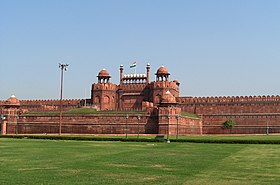
A view of the Red Fort
| |
| Location | Delhi, India |
| Coordinates | 28.656°N 77.241°ECoordinates: 28.656°N 77.241°E |
| Built | 1648 |
| Architect | Ustad Ahmad Lahauri |
| Architectural style(s) | Indian architecture |
| Official name: Red Fort Complex | |
| Type | Cultural |
| Criteria | ii, iii, vi |
| Designated | 2007 (31st session) |
| Reference no. | 231 |
| State Party | India |
| Region | Asia-Pacific |
The Red Fort was the residence of the Mughal emperor for nearly 200 years, until 1857. It is located in the centre of Delhi and houses a number of museums. In addition to accommodating the emperors and their households, it was the ceremonial and political centre of Mughal government and the setting for events critically impacting the region.[1]
Constructed in 1648 by the fifth Mughal Emperor Shah Jahan as the palace of his fortified capital Shahjahanabad,[2] the Red Fort is named for its massive enclosing walls of red sandstone and is adjacent to the olderSalimgarh Fort, built by Islam Shah Suri in 1546. The imperial apartments consist of a row of pavilions, connected by a water channel known as the Stream of Paradise (Nahr-i-Behisht). The fort complex is considered to represent the zenith of Mughal creativity under Shah Jahan and although the palace was planned according to Islamic prototypes, each pavilion contains architectural elements typical of Mughal buildings that reflect a fusion of Timurid and Persian traditions. The Red Fort’s innovative architectural style, including its garden design, influenced later buildings and gardens in Delhi, Rajasthan, Punjab, Kashmir, Braj, Rohilkhand and elsewhere.[1] With the Salimgarh Fort, it was designated a UNESCO World Heritage Site in 2007 as part of the Red Fort Complex.[1][3]
On Independence Day (15 August), the Prime Minister of India hoists the 'tricolor' national flag at the main gate of the fort and delivers a nationally-broadcast speech from its ramparts.[4]
Contents
[hide]- 1Name
- 2History
- 3Security
- 4Architecture
- 5Major structures
- 5.1Chawari Bazar
- 5.2Lahori Gate
- 5.3Delhi Gate
- 5.4Water Gate
- 5.5Chhatta Chowk
- 5.6Naubat Khana
- 5.7Diwan-i-Aam
- 5.8Nahr-i-Behisht
- 5.9Mumtaz Mahal
- 5.10Rang Mahal
- 5.11Khas Mahal
- 5.12Diwan-i-Khas
- 5.13Hammam
- 5.14Baoli
- 5.15Moti Masjid
- 5.16Hira Mahal
- 5.17Hayat Bakhsh Bagh
- 5.18Princes' quarter
- 5.19Freedom Struggle Museum [Swatantrata Sangram Sangrahalaya]
- 6See also
- 7References
- 8External links
Name[edit]
Its English name, "Red Fort", is a translation of the Hindustani Lāl Qila (Urdu: لال قلعہ, Hindi: लाल क़िला) deriving from its red-sandstone walls. As the residence of the imperial family, the fort was originally known as the "Blessed Fort" (Qila-i-Mubārak, Urdu: قلعہ مبارک, Hindi: क़िला मुबारक).[5][6] Agra Fort is also called Lāl Qila'.
History[edit]
Emperor Shah Jahan commissioned construction of the Red Fort in 1638, when he decided to shift his capital from Agra to Delhi. Originally red and white, the Shah's favourite colours,[7] its design is credited to architect Ustad Ahmad Lahauri, who also constructed the Taj Mahal.[8][9] The fort lies along the Yamuna River, which fed the moats surrounding most of the walls.[10] Construction began in the sacred month of Muharram, on 13 May 1638.[11]:01Supervised by Shah Jahan, it was completed in 1648.[12][13] Unlike other Mughal forts, the Red Fort's boundary walls are asymmetrical to contain the older Salimgarh Fort.[11]:04 The fortress-palace was a focal point of the medieval city of Shahjahanabad, which is present-day Old Delhi. Its planning and aesthetics represent the zenith of Mughal creativity prevailing during Shah Jahan's reign. His successor Aurangzeb added the Pearl Mosque to the emperor's private quarters, constructing barbicans in front of the two main gates to make the entrance to the palace more circuitous.[11]:08
The administrative and fiscal structure of the Mughal dynasty declined after Aurangzeb, and the 18th century saw a degeneration of the palace. When Jahandar Shah took over the Red Fort in 1712, it had been without an emperor for 30 years. Within a year of beginning his rule, Shah was murdered and replaced by Farrukhsiyar. To raise money, the silver ceiling of the Rang Mahal was replaced by copper during this period. Muhammad Shah, known as 'Rangila' (the Colourful) for his interest in art, took over the Red Fort in 1719. In 1739, Persian emperor Nadir Shah easily defeated the Mughal army, plundering the Red Fort including the Peacock Throne. Nadir Shah returned to Persia after three months, leaving a destroyed city and a weakened Mughal empire to Muhammad Shah.[11]:09 The internal weakness of the Mughal empire made the Mughals titular heads of Delhi, and a 1752 treaty made theMarathas protectors of the throne at Delhi.[14][15] The 1758 Maratha conquest of Lahore and Peshawar[16] placed them in conflict with Ahmad Shah Durrani.[17][18] In 1760, the Marathas removed and melted the silver ceiling of theDiwan-i-Khas to raise funds for the defence of Delhi from the armies of Ahmed Shah Durrani.[19][20] In 1761, after the Marathas lost the third battle of Panipat, Delhi was raided by Ahmed Shah Durrani. Ten years later, Shah Alamascended the throne in Delhi with Maratha support.[11]:10 In 1783 the Sikh Misl Karorisinghia, led by Baghel Singh Dhaliwal, conquered Delhi and the Red Fort. The Sikhs agreed to restore Shah Alam as emperor and retreat from the fort if the Mughals would build and protect seven Gurudwaras in Delhi for the Sikh gurus.[21]
During the Second Anglo-Maratha War in 1803, forces of British East India Company defeated Maratha forces in the Battle of Delhi; this ended Maratha rule of the city and their control of the Red Fort.[22] After the battle, the British took over the administration of Mughal territories and installed a Resident at the Red Fort.[11]:11 The last Mughal emperor to occupy the fort, Bahadur Shah II, became a symbol of the 1857 rebellion against the British in which the residents of Shahjahanbad participated.[11]:15
Despite its position as the seat of Mughal power and its defensive capabilities, the Red Fort was not defended during the 1857 uprising against the British. After the rebellion failed, Bahadur Shah II left the fort on 17 September and was apprehended by British forces. He returned to Red Fort as a prisoner of the British, was tried in 1858 and exiled to Rangoon on 7 October of that year.[23] With the end of Mughal reign, the British sanctioned the systematic plunder of valuables from the fort's palaces. All furniture was removed or destroyed; the harem apartments, servants' quarters and gardens were destroyed, and a line of stone barracks built.[24] Only the marble buildings on the east side at the imperial enclosure escaped complete destruction, but were looted and damaged. While the defensive walls and towers were relatively unharmed, more than two-thirds of the inner structures were destroyed by the British.Lord Curzon, Viceroy of India from 1899–1905, ordered repairs to the fort including reconstruction of the walls and the restoration of the gardens complete with a watering system.[25]
Most of the jewels and artworks of the Red Fort were looted and stolen during Nadir Shah's invasion of 1747 and again after the failed Indian Rebellion of 1857 against the British colonialists. They were eventually sold to private collectors or the British Museum, British Library and the Victoria and Albert Museum. For example, the Koh-i-Noor diamond, the jade wine cup of Shah Jahan and the crown of Bahadur Shah II are all currently located in London. Various requests for restitution have so far been rejected by the British government.[26]
1911 saw the visit of the British king and queen for the Delhi Durbar. In preparation of the visit, some buildings were restored. The Red Fort Archaeological Museum was also moved from the drum house to the Mumtaz Mahal.
The INA trials, also known as the Red Fort Trials, refer to the courts-martial of a number of officers of the Indian National Army. The first was held between November and December 1945 at the Red Fort.
On 15 August 1947, the first Prime Minister of India Jawaharlal Nehru raised the Indian national flag above the Lahore Gate. On each subsequent Independence Day, the prime minister has raised the flag and given a speech that is broadcast nationally.[27]
After Indian Independence the site experienced few changes, and the Red Fort continued to be used as a military cantonment. A significant part of the fort remained under Indian Army control until 22 December 2003, when it was given to the Archaeological Survey of India for restoration.[28][29] In 2009 the Comprehensive Conservation and Management Plan (CCMP), prepared by the Archaeological Survey of India under Supreme Court directions to revitalise the fort, was announced.[30][31][32]
The fort today[edit]
Every year on India's Independence Day (15 August), the Prime Minister of India hoists the national flag at the Red Fort and delivers a nationally-broadcast speech from its ramparts.[4] The Red Fort, the largest monument in Delhi,[33] is one of its most popular tourist destinations[34] and attracts thousands of visitors every year.[35]
A sound and light show describing Mughal history is a tourist attraction in the evenings. The major architectural features are in mixed condition; the extensive water features are dry. Some buildings are in fairly-good condition, with their decorative elements undisturbed; in others, the marble inlaid flowers have been removed by looters. The tea house, although not in its historical state, is a working restaurant. The mosque and hamam or Turkish Bath are closed to the public, although visitors can peer through their glass windows or marble latticework. Walkways are crumbling, and public toilets are available at the entrance and inside the park.
The Lahore Gate entrance leads to a mall with jewellery and craft stores. There is also a museum of "blood paintings", depicting young 20th-century Indian martyrs and their stories, an archaeological museum and an Indian war-memorial museum.
Security[edit]
To prevent terrorist attacks, security is especially tight around the Red Fort on the eve of Indian Independence Day. Delhi Police and paramilitary personnel keep watch on neighbourhoods around the fort, and National Security Guard sharpshooters are deployed on high-rises near the fort.[36][37] The airspace around the fort is a designated no-fly zone during the celebration to prevent air attacks,[38] and safe houses exist in nearby areas to which the Prime Minister and other Indian leaders may retreat in the event of an attack.[36]
The fort was the site of a terrorist attack on 22 December 2000, carried out by six Lashkar-e-Toiba members. Two soldiers and a civilian were killed in what the news media described as an attempt to derail India-Pakistan peace talks.[39][40]
Architecture[edit]
The Red Fort has an area of 254.67 acres (103.06 ha) enclosed by 2.41 kilometres (1.50 mi) of defensive walls,[2] punctuated by turrets and bastions and varying in height from 18 metres (59 ft) on the river side to 33 metres (108 ft) on the city side. The fort is octagonal, with the north-south axis longer than the east-west axis. The marble, floral decorations and double domes in the fort's buildings exemplify later Mughal architecture.[41]
It showcases a high level of ornamentation, and the Kohinoor diamond was reportedly part of the furnishings. The fort's artwork synthesises Persian, European and Indian art, resulting in a unique Shahjahani style rich in form, expression and colour. Red Fort is one of the building complexes of India encapsulating a long period of history and its arts. Even before its 1913 commemoration as a monument of national importance, efforts were made to preserve it for posterity.
The Lahori and Delhi Gates were used by the public, and the Khizrabad Gate was for the emperor.[11]:04 The Lahore Gate is the main entrance, leading to a domed shopping area known as the Chatta Chowk (covered bazaar).[41]
Major structures[edit]
The most important surviving structures are the walls and ramparts, the main gates, the audience halls and the imperial apartments on the eastern riverbank.[42]
Chawari Bazar[edit]
Chawari Bazar is located infront of Red Fort.
Lahori Gate[edit]
The Lahori Gate is the main gate to the Red Fort, named for its orientation towards the city of Lahore. During Aurangzeb's reign, the beauty of the gate was spoiled by the addition of bastions, Shahjahan described this as "a veil drawn across the face of a beautiful woman".[43][44][45] Every Indian Independence Day since 1947, the national flag has flown and the Prime Minister has made a speech from its ramparts.
Delhi Gate[edit]
The Delhi Gate is the southern public entrance and in layout and appearance similar to the Lahori Gate. Two life-size stone elephants on either side of the gate face each other. These were renewed by Lord Curzon in 1903 after their earlier demolition by Aurangzeb.[46]
Water Gate[edit]
A minor gate, the Water Gate is at the southeastern end of the walls. It was formerly on the riverbank; although the river has changed course since the fort's construction, the name has remained.
Chhatta Chowk[edit]
Adjacent to the Lahori Gate is the Chhatta Chowk, where silk, jewellery and other items for the imperial household were sold during the Mughal period. The bazaar leads to an open outer court, where it crosses the large north-south street which originally divided the fort's military functions (to the west) from the palaces (to the east). The southern end of the street is the Delhi Gate.
Naubat Khana[edit]
The vaulted arcade of the Chhatta Chowk ends in the centre of the outer court, which measured 540 by 360 feet (160 m × 110 m).[47] The side arcades and central tank were destroyed after the 1857 rebellion.
In the east wall of the court stands the now-isolated Naubat Khana (also known as Nakkar Khana), the drum house. Music was played at scheduled times daily next to a large gate, where everyone except royalty was required to dismount.
Diwan-i-Aam[edit]
The inner main court to which the Nakkar Khana led was 540 feet (160 m) wide and 420 feet (130 m) deep, surrounded by guarded galleries.[47] On the far side is the Diwan-i-Aam, the Public Audience Hall.
The hall's columns and engrailed arches exhibit fine craftsmanship, and the hall was originally decorated with white chunam stucco.[47] In the back in the raised recess the emperor gave his audience in the marble balcony (jharokha).
The Diwan-i-Aam was also used for state functions.[41] The courtyard (mardana) behind it leads to the imperial apartments.
Nahr-i-Behisht[edit]
The imperial apartments consist of a row of pavilions on a raised platform along the eastern edge of the fort, overlooking the Yamuna. The pavilions are connected by a canal, known as the Nahr-i-Behisht ("Stream of Paradise"), running through the centre of each pavilion. Water is drawn from the Yamuna via a tower, the Shahi Burj, at the northeast corner of the fort. The palace is designed to emulate paradise as described in the Quran. In the riverbed below the imperial apartments and connected buildings was a space known as zer-jharokha ("beneath the latticework").[47]
Mumtaz Mahal[edit]
The two southernmost pavilions of the palace are zenanas (women's quarters), consisting of the Mumtaz Mahal and the larger Rang Mahal. The Mumtaz Mahal houses the Red Fort Archaeological Museum.
Rang Mahal[edit]
The Rang Mahal housed the emperor's wives and mistresses. Its name means "Palace of Colours", since it was brightly painted and decorated with a mosaic of mirrors. The central marble pool is fed by the Nahr-i-Behisht.
Khas Mahal[edit]
The Khas Mahal was the emperor's apartment. Connected to it is the Muthamman Burj, an octagonal tower where he appeared before the people waiting on the riverbank.This was done mostly by all the kings present at that time.
Diwan-i-Khas[edit]
A gate on the north side of the Diwan-i-Aam leads to the innermost court of the palace (Jalau Khana) and the Diwan-i-Khas (Hall of Private Audience). It is constructed of white marble, inlaid with precious stones. The once-silver ceiling has been restored in wood. François Bernier described seeing the jewelled Peacock Throne here during the 17th century. At either end of the hall, over the two outer arches, is an inscription by Persian poet Amir Khusrow:
Hammam[edit]
The hammam were the imperial baths, consisting of three domed rooms floored with white marble.
Baoli[edit]
The baoli or step-well, believed to pre-date Red Fort, is one of the few monuments that were not demolished by the British after the Indian Rebellion of 1857. The chambers within the baoli were converted into prison. During the Indian National Army Trials or Red Fort Trials in 1945-46, it housed Indian National Army officers Colonel Shah Nawaz Khan, Colonel Prem Kumar Sahgal and Colonel Gurbaksh Singh Dhillon. Red Fort Baoli is uniquely designed with two sets of staircases leading down to the well.[48]
Moti Masjid[edit]
West of the hammam is the Moti Masjid, the Pearl Mosque. A later addition, it was built in 1659 as a private mosque for Aurangzeb. It is a small, three-domed mosque carved in white marble, with a three-arched screen leading down to the courtyard.[49]
Hira Mahal[edit]
The Hira Mahal is a pavilion on the southern edge of the fort, built under Bahadur Shah II and at the end of the Hayat Baksh garden. The Moti Mahal on the northern edge, a twin building, was destroyed during (or after) the 1857 rebellion.
The Shahi Burj was the emperor's main study of the; its name means "Emperor's Tower", and it originally had a chhatri on top. Heavily damaged, the tower is undergoing reconstruction. In front of it is a marble pavilion added by Aurangzeb.
Hayat Bakhsh Bagh[edit]
The Hayat Bakhsh Bagh is the "Life-Bestowing Garden" in the northeast part of the complex. It features a reservoir (now dry) and channels, and at each end is a white marble pavilion (Savonand Bhadon). In the centre of the reservoir is the red-sandstone Zafar Mahal, added about 1842 under Bahadur Shah II.[50]
Smaller gardens (such as the Mehtab Bagh or Moonlight Garden) existed west of it, but were destroyed when the British barracks were built.[11]:07 There are plans to restore the gardens. Beyond these, the road to the north leads to an arched bridge and the Salimgarh Fort.
Princes' quarter[edit]
North of the Hayat Bakhsh Bagh and the Shahi Burj is the quarter of the imperial princes. This was used by member of the Mughal royal family and was largely destroyed by the British forces after the rebellion. One of the palaces was converted into a tea house for the soldiers.
Freedom Struggle Museum [Swatantrata Sangram Sangrahalaya][edit]
Considering the role the Red Fort has played in the freedom struggle Swatantrata Sangram Sanghralaya was set up in one of the double storeyed army barracks in 1995. The museum provides a glimpse of major phases of India's struggle for freedom, from the First War of Independence of 1857 to India's Independence in 1947. In the museum, the history of the freedom struggle is depicted through photographs, documents, paintings, lithographs and objects like guns, pistols, swords, shields, badges, medals, dioramas, sculptures etc.
See also[edit]
| India Profile » Monuments and Temples in India » Forts of Delhi | |
Forts of Delhi | |
 | |
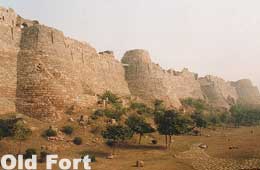 Delhi is one of the oldest living cities in the world with almost 20,000 ancient monuments. Delhi has a rich history and the monuments of Delhi are its evidence. Delhi is not a single city but a combination of eight cities that have been established here at various point of time from as early as 900 BC to 1930 AD when the British completed the construction of New Delhi as the capital of imperial India. It is, therefore, the monuments of Delhi successfully represent the development of several architectural styles in the country. Delhi is one of the oldest living cities in the world with almost 20,000 ancient monuments. Delhi has a rich history and the monuments of Delhi are its evidence. Delhi is not a single city but a combination of eight cities that have been established here at various point of time from as early as 900 BC to 1930 AD when the British completed the construction of New Delhi as the capital of imperial India. It is, therefore, the monuments of Delhi successfully represent the development of several architectural styles in the country.
Indraprastha
A history of Delhi begins with the creation of the Indraprastha by the Pandavas in c. 1450 BC. It was designed by the legendry architect Maya who made the magnificent palaces and courts for the Pandavas. Recent findings in the archaeological excavations have proved that the city of Indraprastha was located in the Purana Qila or the Old Fort area and was in continuous occupation up to 1000 BC. Delhi fell into oblivion with the decline of Buddhism and remained unimportant when the neighboring cities of Mathura and Kannauj flourished.
Lal Kot or Qila-I-Rai Pithora
Lal Kot was built by the Tomar ruler Anangpal I in about 731 A.D and said to have been rebuilt by Anangpal II in 11th century when he transferred the Capital from Kannauj to Delhi. The Chauhans defeated the Tomars in 12th century AD. Prithviraj extended the old city of Lal Kot and added ramparts and moat. Prithviraj was also known as Rai Pithora and thus it came to be known as Qila-I-Rai Pithora, the first city of Delhi. Lal Kot was an oblong structure having seven gates-Sohna, Ranjit, Ghazni, Hauz Rani, Barka, Budaun and Maya. Only ramparts are visible near the Qutub Minar although it is said to have had several Jain and Hindu temples. Mohammad Ghori invaded India towards the end of the 12th century AD from Afghanistan and defeated Prithviraj and occupied Delhi. He, however, returned to Afghanistan after leaving his new kingdom in the hands of his slave Qutub-ud-din Aibak. The Lal Kot continued to be the capital till 1303 AD.
Siri Fort
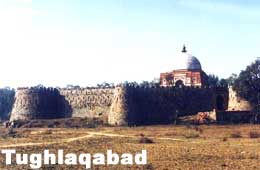 The city of Siri was the second city of Delhi built by Ala-ud-din Khilji in 1311 AD. The fort had the Palace of Thousand Pillars, which is now in ruins. Only the embattlements have left of the entire fort. The story goes that Ala-ud-din got the heads of the infidels whom he had got killed dug in the foundation of the fort. The fort thus got its name as the Siri Fort. But there is no supporting evidence to believe this story. Ala-ud-din built a vast water reservoir, Hauz-I-Shamsi in the present Hauz Khas area to have a continuous supply of water in the city. The city of Siri was the second city of Delhi built by Ala-ud-din Khilji in 1311 AD. The fort had the Palace of Thousand Pillars, which is now in ruins. Only the embattlements have left of the entire fort. The story goes that Ala-ud-din got the heads of the infidels whom he had got killed dug in the foundation of the fort. The fort thus got its name as the Siri Fort. But there is no supporting evidence to believe this story. Ala-ud-din built a vast water reservoir, Hauz-I-Shamsi in the present Hauz Khas area to have a continuous supply of water in the city.
Tughlaqabad
Ghazi Malik, famous as Ghiyas-ud-din, founded the Tughlaq Dynasty in 1321 AD. He built the strongest fort in Delhi at Tughlaqabad, which was completed a great speed of four years of his rule. Tughlaqabad is the third city of Delhi. The fort has slanting walls, double-storeyed bastions, gigantic towers, palaces, mosques and audience halls. It was deserted soon after the death of Ghiyas-ud-Din probably because of scarcity of water or because of the new capital built by Mohammad Bin Tughlaq.
Jahanpanah
Muhammad Bin Tughlaq first built Adilabad then Nai-ka-Kot towards the south of Tughlqabad. They are two small fortresses. But he soon abandoned it. He built a new city by enclosing the areas lying between the cities of Siri, Tughlaqabad and Lal Kot. The city was named as Jahanpanah, asylum of the world in 1334 AD. The city had 13 gates. The ruins of gigantic ramparts of his two fortresses and some portions of the Jahanpanah walls have survived the ravages of time but are in ruins. The watchtower Bajai Mandal still stands in ruins in the city of Jahanpanah.
Kotla Firoz Shah or Firuzabad
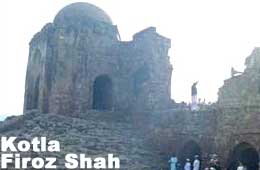 Firoz Shah built a new capital city on the banks of the River Yamuna in 1351 AD and called it Firuzabad. The architecture of the fort was fairly simple and straightforward. The city had three palaces and a citadel known as Firoz Shah Kotla. The king's as well as his wive's quarters were situated along the riverfront. The structures within the enclosure walls of the fort were barracks, armories, servant's rooms, halls for audience, an imposing mosque as well as public and private baths and a stepped well or baoli. An Ashokan pillar brought from Topara, Ambala was mounted on top of a pyramidal three-tiered construction. Firoz Shah built a new capital city on the banks of the River Yamuna in 1351 AD and called it Firuzabad. The architecture of the fort was fairly simple and straightforward. The city had three palaces and a citadel known as Firoz Shah Kotla. The king's as well as his wive's quarters were situated along the riverfront. The structures within the enclosure walls of the fort were barracks, armories, servant's rooms, halls for audience, an imposing mosque as well as public and private baths and a stepped well or baoli. An Ashokan pillar brought from Topara, Ambala was mounted on top of a pyramidal three-tiered construction.
Old Fort or Purana Qila
The Old Fort was the citadel of the city of Dinpanah, Refuge of the Faithful. It was started by Humayun in 1533 AD and completed five years later. When the Afghan King Sher Shah Suri defeated Humayun, he renamed the fort as Shergarh. Sher shah is also credited with adding many more buildings in the complex. There are three entrances to the Purana Qila out of which only one remains open and is used as the entrance these days. It is called the Bara Darwaza. The south gate is called the Humayun Gate probably because it was constructed by Humayun or Humayun's Tomb is visible from there. The third gate is known as the Talaqi Gate.Qila-I-Kuhna Masjid is an imposing mosque constructed by Sher Shah in 1541 AD. The central portion of the mosque is made up of white marble and bright red sandstone. The inner western wall called the qibla wall of the mosque has five arched openings richly ornamented in white and black marbles. Sher Shah constructed another building, the Sher Mandal, as a pleasure tower. It is an octagonal building made up of red sandstone. The two-storeyed pavilion has steep steps leading up to the roof. The structure was intended to be higher than its existing height but the work was stopped due to untimely death of Sher Shah. When Humayun recaptured Delhi in 1555 AD, he converted the Sher Mandal into his library and observatory. Humayun fell from the steps of this building a year later while he was coming down for his namaz.
Fort of Salimgarh
The Fort of Salimgarh is adjacent to the Lal Qila across the Ring Road. It was built by Sher Shah Suri's son Salim Shah. It was an island fort encircled by the river Yamuna. The bridge on the north connects the red Fort with the Fort of Salimgarh. It was used by the British as a prison for the freedom fighters. The fort was renamed as Swatantrata Senani Smarak after the Independence.
Red Fort or Lal Qila
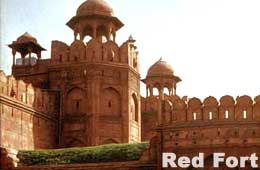 The Red Fort or Lal Qila was the part of the city of Shahjahanabad. The fort was started in 1638 AD and completed in 1648 AD by Shahjahan. It is built of red sandstone and has turrets and bastions. The fort is surrounded by a moat in the northeast corner of the city. The wall is two km long and varies in height from 18 m on the riverfront to 33 m in the city. The Red Fort or Lal Qila was the part of the city of Shahjahanabad. The fort was started in 1638 AD and completed in 1648 AD by Shahjahan. It is built of red sandstone and has turrets and bastions. The fort is surrounded by a moat in the northeast corner of the city. The wall is two km long and varies in height from 18 m on the riverfront to 33 m in the city.The fort contains all the important buildings of Mughal government like the Halls of Public and Private Audience Diwan-I-Aam and Diwan-I-Khas, marble palaces, private apartments, a mosque and elaborately designed gardens. It was attacked by the Persian Emperor Nadir Shah in 1739 AD and by the British soldiers during the war of independence in 1857. Entrance to the fort is through the imposing Lahore Gate, which takes its name from the fact that it faces Lahore, now in Pakistan. This gate was built by Aurangzeb during his reign and is also known as the Laj Ki Diwar. There is a story that the bazaar of Chandini Chowk was visible from the Diwan-I-Aam. The nobles had to mount down the horse while crossing the bazaar when the emperor was presiding over the hall. Aurangzeb got the wall constructed to make the nobles free from discomfort. The main entrance of the Red Fort opens towards the Chatta Chowk, which was a covered street flanked with arched cells. The street used to house Delhi's most talented jewelers, carpet makers, weavers and goldsmiths. This arcade was also known as the Meena Bazaar and was the shopping center for the ladies of the court. Beyond the Chatta Chowk is the Naubat Khana or the Drum House. The musicians used to play for the emperor from the Naubat Khana and the arrival of princes and royalty was heralded from here. The other attractions within the Red Fort are the Royal Baths or Hammams, the Shahi Burj, Shahjahan's private working area and the Moti Masjid or the Pearl Mosque, built by Aurangzeb for his personal use. The Rang Mahal or the Palace of Colors was the living chamber of the Emperor's wives and mistresses. This palace was crowned with gilded turrets, delicately painted and decorated with an intricate mosaic of mirrors, and a ceiling overlaid with gold and silver that was reflected in a central pool in the marble floor. | |
 |
Search Results
Red Fort | Voices and Visions
voices-and-visions.com/tag/red-fort/
You would never seen this Amazing View of Inside Red Fort, Delhi India
https://www.youtube.com/watch?v=DdExL1bPsCM
Sep 25, 2015 - Uploaded by Cam Dust
Red fort is one of the great historical monument of India. First of all we ... Construction of red fort was ...The Red Fort – a story not altogether happy | Voices and Visions
https://voices-and-visions.com/.../the-red-fort-–-a-story...
Nov 7, 2010
The Mughal emperor, Shah Jahan, who also built the Taj Mahal, began the construction of the Red Fort in ...Crowded street in front of Red Fort, Delhi, India - YouTube
https://www.youtube.com/watch?v=ZixiJt9BUXk
Feb 12, 2013 - Uploaded by WildFilmsIndia
Crowded street in front of the Mughal monument of the Red Fort, Delhi ... The construction of the Red Fort ...Museum of Red Fort - YouTube
https://www.youtube.com/watch?v=lMEVP...
Dec 29, 2011 - Uploaded by Rajesh Khatri
A new royal palace known as Red Fort or Red Fort Delhi (Lal Qila) was constructed. It was begun in 1639 and ...Red Fort - YouTube
https://www.youtube.com/watch?v=ild6mw_1YfU
Jan 30, 2015 - Uploaded by ken chanthy
The Red Fort, constructed by Shah Jahan, was built as the fortified palace of Shahjahanabad, capital of ...Red Fort Delhi in 12 Videos - YouTube
https://www.youtube.com/playlist?list...
Jul 1, 2014 - Red fort is one of the great historical monument of India. ... as red fortbecause there is too much use of red stones in construction of red fort.The Red Fort, a prominent fort in Delhi - YouTube
https://www.youtube.com/watch?v=AfyiUswtziY
Feb 13, 2013 - Uploaded by WildFilmsIndia
The Red Fort is a 17th-century fort complex constructed by the ... The construction of the Red Fort began in ...Red Fort, Lal Kila, Delhi - YouTube
https://www.youtube.com/watch?v=q8wmBjyOU-Q
Dec 26, 2011 - Uploaded by Rajesh Khatri
The Red Fort (Hindi: लाल क़िला, Urdu: لال قلعہ, usually ... Emperor Shah Jahan built Delhi's most magnificent ...Meena bazar Inside Red fort Delhi (India),.Part 3 mp4 - YouTube
https://www.youtube.com/watch?v=Lpl8IpapWxQ
Nov 21, 2012 - Uploaded by Asok majumder
He instructed Mukarmat Khan who was supervising the theconstruction of Red Fort,to built asimilar covered ...
Stay up to date on results for construction of red fort completed.
Create alertSearch Results
Red Fort - Wikipedia, the free encyclopedia
https://en.wikipedia.org/wiki/Red_Fort
The Red Fort was the residence of the Mughal emperor for nearly 200 years, until 1857. ... Emperor Shah Jahan commissioned construction of the Red Fort in 1638
You visited this page on 12/5/16.
People also ask
HISTORY BEHIND RED FORT ~ HISTORY OF INDIA
historicaltimeofindia.blogspot.com/2013/06/history-behind-red-fort.html
Jun 2, 2013 - He assigns Ustad Ahmed and Ustad humid as an architect forconstructing a royal palace. Construction of red fort was completed by Shah ...Red Fort New Delhi - History of Red Fort Delhi - Tourist Places in Delhi
touristplaces.hotelsofnewdelhi.com/red-fort-new-delhi.html
The construction of Red Fort was begun in 1639 and completed in 1648. The fort is peaceful retreat from the noise and chaos outside it. The Lahori Gate is the ...History of Red Fort Delhi - Red Fort (Lal Quila) in Delhi
www.redfortdelhi.co.in/history.htm
The construction of Red Fort by the sandstone of red color in large scale gave it ... History of Red Fort Delhi reveals that numerous sections were built in the fort ...History of Red Fort in Delhi (Lal Qila) - Important India
www.importantindia.com/11251/history-of-red-fort-in-delhi/
Mar 12, 2014 - Lal Qila or Red fort is one of the most magnificent palaces of the ... Theconstruction works of Red Fort were finally completed in 1648 A.D..Essay on Red Fort (Lal Quila) for Kids, Children and Students
www.indiacelebrating.com/essay/monuments/red-fort/
The wall of the Red Fort is constructed using 30 meters high stones. It took around nine years to be completed. It is also known as Lal Qila of New Delhi.Red Fort Delhi - World Heritage Site - Archaeological Survey of India
asi.nic.in › Monuments › World heritage Site
His famous citadel, the Lal-Qila, or the Red Fort, lying at the town's northern end on ... and south of Salimgarh, was begun in 1639 and completed after nine years. ... gates and a few other structures in the fort are constructed of red sandstone, ...13 Amazing Facts About The Red Fort You Probably Didn't Know
www.scoopwhoop.com/inothernews/red-fort-facts/
Sep 11, 2015 - Yes, it's called the Red Fort, but it was not originally built that way. ... it was constructed in red stone and bricks the British called it Red Fort, and ...Interesting facts and information about Red fort or Lal Qila - FACTS n ...
www.factsninfo.com/.../facts-information-red-fort-or-lal-qila-delhi.html
Mughal emperor shah jahan built this massive fort when he transferred the capital from Agra to Delhi. The construction of this monument began in the month of ...Searches related to construction of red fort completed
Kharghar, Navi Mumbai, Maharashtra - From your Internet address - Use precise location

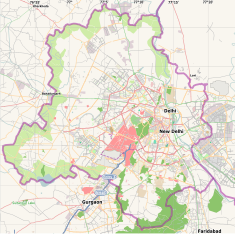
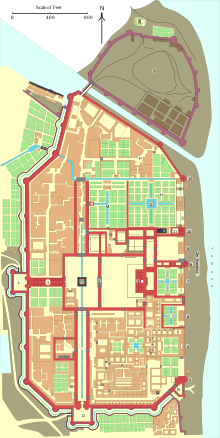


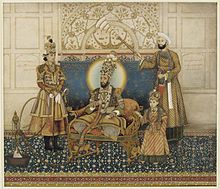

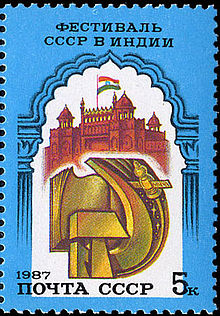










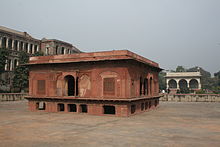
Thanks for sharing this one great and helpful post with us.
ReplyDeletehttps://www.worldshouter.com/delhi-museums/